9 ways life has changed for deaf people

See Hear is the world's longest-running television series for the deaf community and 91�ȱ�'s fifth oldest factual series.
The programme was first broadcast on 11 October 1981 and, to celebrate its 40th anniversary, the team look back at how life has changed for the Deaf over the past four decades.

We no longer have to make up what’s going on on television
When television was introduced in the UK in 1936, there were no subtitles for deaf people.
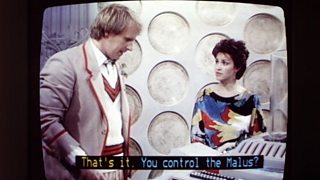
It wouldn't be until the 1980s when the first Teletext subtitles were introduced, and subtitles have only been more readily available over the past decade.
Up to then, some deaf people would watch TV and make up their character names and storylines.
In the UK, the 91�ȱ� was the first broadcaster to include subtitles in 1979, and since 2010 91�ȱ� has provided a 100% broadcast captioning service across all seven of its main broadcast channels.
In addition, 91�ȱ� iPlayer launched in 2008 as the first captioned Video-on-Demand service from a major broadcaster.

We now have access to festivals and concerts
Since 2009, has been working to support Deaf Festival-goers at Glastonbury Festival. It provides a team of British Sign Language (BSL) interpreters that cover music performances on the Pyramid and other stages.
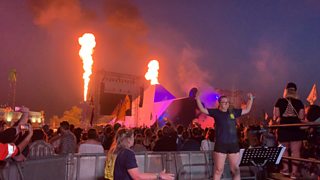
In 2019 Tara St Clair's BSL interpretation of Stormzy's headline set at Glastonbury in 2019 went - her dextrous visualisation of the grime MC's rapid-fire lyrics took weeks to perfect.
As well as interpreting duties, the DeafZone Tent Crew also offer Deaf awareness information and BSL classes and perform BSL poetry throughout the Festival.
Wembley has now guaranteed BSL interpretation for every show, and guests who require interpreters no longer have to pre-book or attend on a specific night.

Deaf people are now in high flying jobs
In the last 40 years, we've seen degrees and masters in deaf studies and sign language pave the way for sign language interpreters.
Deaf people are strong and capableRose Ayling-Ellis, Actor
There are currently more than 1,600 language service professionals, including British Sign Language/English Interpreters and Translators, Lipspeakers and notetakers.
In 1994, began. This government fund helps pay towards the equipment an individual needs at work, such as a sign language interpreter.
This has meant that deaf people now, at last, have the access they need in the workplace and, as a consequence, there are more and more deaf people in high flying jobs.
We have qualified doctors, vets, chief executives, journalists, Paralympians and actors - all are deaf and use sign language.
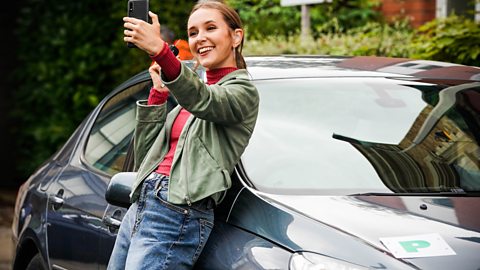
Rose Ayling-Ellis joined EastEnders in 2020 and is the first ever deaf actor to play a deaf character on the soap
Join Rose as she takes See Hear on a tour of the EastEnders set

We are now represented on screen
With films such as A Quiet Place, Sound of Metal, and CODA being box office hits, and actors like Rose Ayling-Ellis becoming the first deaf contestant on Strictly Come Dancing, representation on screen has never been so good for deaf people. And it all began with the 91�ȱ�'s pioneering programme See Hear.
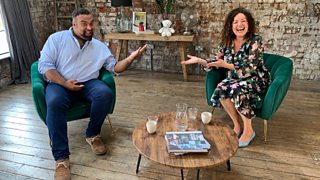
It is still a trailblazing series- both on and off camera- forty years on.Camilla Arnold, See Hear Series Producer
The first series launched on 11 October 1981 on 91�ȱ� One and has been campaigning and entertaining Deaf and hard-of-hearing people ever since. It featured the first deaf soap series, Switch, partnered with Newsnight to expose shocking abuse in a deaf school, and See Hear on Tour, the first travel programme presented in BSL.
See Hear's Camilla Arnold is 91�ȱ� Studios first female Deaf series producer: "See Hear records milestones in deaf history, highlights the issues we face and above all, shines a light where other mainstream programmes very rarely venture."
The British Sign Language Broadcasting Trust was set up in 2008 to offer a way for commercial broadcasters to meet their regulatory requirements to provide sign language on their qualifying channels. They commission programmes made in BSL by Deaf people for Deaf people and have been the springboard for many deaf media professionals.

We no longer have to rely on relatives to make social plans for us
Technology nowadays means we can contact our friends directly via video call or text to make plans.
Video calling meant I could still feel part of the family
Up to the 1990s, deaf people would have to ask their parents or relatives to make calls for them, but we’ve seen the rapid evolution of technology since then.
We can now catch up with friends via FaceTime, make a dinner booking via a video relay interpreter, use instant chat for customer services and be alerted to noises such as doorbells, fire alarms and babies crying via our phones.
We can even follow speech through speech recognition apps and identify music playing via music recognition apps.

New technology has transformed the lives of many deaf people
FaceTime was introduced in 2010

We can ‘hear’ better
Hearing aids have come a long way since the vacuum tube contraptions of the 1800s, but it’s only within the last few decades that there’s been a huge transformation.

In 1995 the first digital hearing aids were invented- making for clearer sound for the users. Now some hearing aids are so advanced that they have integrated sensors like accelerometers and gyroscopes to track the wearer’s physical and mental health.
In 1993 we saw the first deaf-born UK child to have a cochlear implant. Instead of simply making sounds louder, like a conventional hearing aid would, the cochlear implant provides a sensation of hearing by directly stimulating the auditory nerve using electrical signals.
The introduction of newborn screening for deafness throughout the UK in March 2006 raised questions about how early babies should be implanted. Some research studies led some to advocate that the age of implantation should be before the age of two years.

The term, ‘Deafhood’, was coined
In 2003, the book Understanding Deaf Culture: In Search of Deafhood, by Paddy Ladd, popularised the term 'deafhood', which Ladd had coined in 1990.
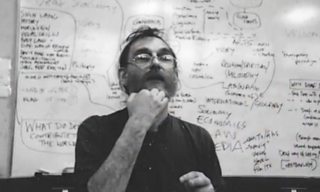
Deafhood is not seen as a finite state but as a process by which Deaf individuals come to actualise their Deaf identityPaddy Ladd, Author
In the book, Ladd describes how, as one of the first deaf children in mainstream education, he was not taught to sign but forced to use his eyes and common sense to work out what was going on.
What Ladd became was pioneering. He initiated deaf television programming in Britain in the 1980s; worked as a presenter of 91�ȱ� television's See Hear; created the world's first sign language pop video; and devised the first master's course in deaf culture.
Drawing on examples from philosophy, visual art and literature spanning the history of western civilisation, he argues that oralism is relatively recent and that sign language was once greatly respected - even revered - by deaf and hearing people.
A concept called 'deafhood'.

Sign language is now recognised as a language
On Tuesday 18 March 2003, the UK Government formally recognised British Sign Language as a language in its own right. Yet despite this victory, BSL does not yet have any legal status, unlike the Welsh, Gaelic and Cornish languages. The British Deaf Association (BDA) has an ongoing campaign for a legal status of BSL to give deaf people legal protection. Because of the BDA’s campaign, in 2015, BSL (Scotland) Act was passed.
It was an important and historic achievement
In June 2021, it was found that the UK Government breached the Equality Act 2010 when it failed to provide a British Sign Language (BSL) interpreter for its scientific briefings on the coronavirus. The judgment is a victory for Deaf campaigners, who have called on the Government to provide an in-person interpreter for its press conferences since March last year through the #WhereIsTheInterpreter campaign.
Work is ongoing to implement a GCSE in British Sign Language (BSL) following a campaign by a deaf schoolboy, Daniel Jillings.

Marches helped force the UK Government to formally recognised British Sign Language
However, BSL still does not have any legal status

We can now take part in jury service
In 2021 sign language interpreters were permitted in jury rooms in England and Wales, enabling most deaf people to participate in jury service for the first time.

It's an important part of citizenship that we are all equal and therefore have the right to participate in a juryProf. Jemina Napier, Researcher
The planned legal change amended strict rules that mandate only the 12 selected jury members can be present during private deliberations to allow for a British Sign Language interpreter where needed.
While there is no specific ban on deaf people serving on juries, many have previously been found ineligible to serve or left to rely on lip-reading and limited hearing during private jury discussions.

See Hear airs on the first Wednesday of every month at 8am. Watch the latest episode here.